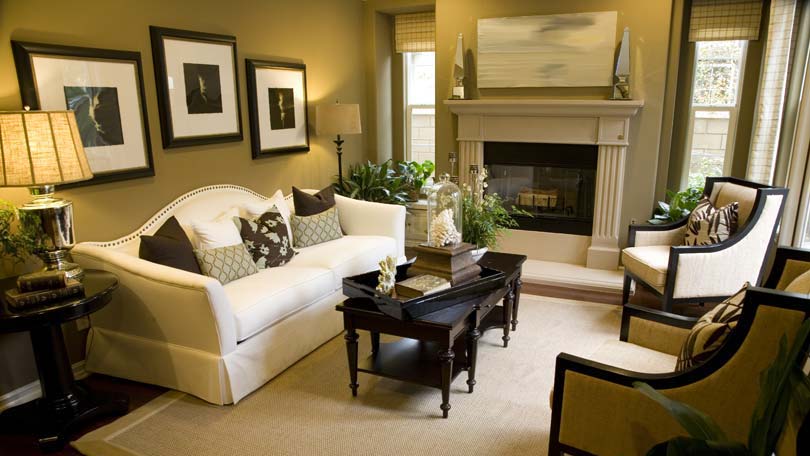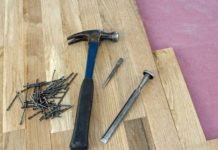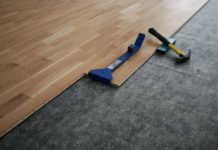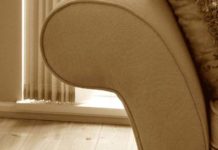
Decorating a living room can be challenging, but it can also be a lot of fun and very rewarding when the room design is successful.
Whether it is formal drawing room or reception area, a casual lounge, or a sitting room that will be used by the whole family, a living room will usually become a hive of activity. This means that you need to choose the right type of furniture for the room, including chairs and sofas, bookshelves, TV cabinets and tables of various types – depending of course on your personal needs.
It doesn’t matter whether you are buying a lounge suite or selecting end tables for your living room, the first step is to make sure you identify what your needs are. This doesn’t mean the fact that you simply want end tables or a couch, but rather what you need them for. After all you can use pretty well anything to stand and display things on. And you can sit on any type of seat. The question is what exactly will the tables be used for and what sort of seating is needed.
Identify your living room needs
Living rooms take so many different forms it really is essential to know what you want. If you have the luxury of more than one “living” room, you will be able to choose what happens where. For instance you may be able to accommodate a formal room where you entertain guests as well as a family room where you keep a music centre, television and possibly also a mini-library.
When used by the whole family, a living room will generally become a multifunctional room. It will usually be where everyone sits and relaxes. It will often be where the television set is located, and so will become a family entertainment area of sorts. It might even double as a dining room, where the family eats. Sometimes children will use it to do homework, and the mother of the house might also use it as a sewing room.
Once you know how you will use your living room or rooms, you can decide how to lay it out and how to furnish it. The main priorities will be seating, surfaces and storage. In this article we focus on tables, specifically end tables.
Suitable tables for a living room
The most usual table chosen for a living room is a coffee table. This is usually placed in front of a couch or sofa, and its official function is a surface for a tea tray or coffee mugs. More usually, a coffee table becomes a place for books (specifically good looking ‘coffee table’ books) – or when the neighbors aren’t looking, a rest for tired feet.
Larger, higher tables are also included in many living rooms, and are often used to display decorative items. When it is a real family room, a larger table will often become a venue for homework within the living room.
Generally pedestal tables are round and a feature in themselves. Similarly, half round tables are intended for use against a wall, and these are normally used for display purposes.
Sideboard-style tables, which are usually rectangular in shape, are also popular in living rooms. These are generally narrow and quite high – normally about the height of a regular mantelpiece that would be constructed above a fireplace. Mostly they are used to display items, including flowers and ornaments.
End tables are small tables that are placed on either side of sofas and couches, or beside chairs. These are usually the height of the arm of the chair, making them a practical addition to the room. They are used in much the same way as bedside tables are (in the bedroom), for anything from cups and glasses to books and whatever else you want next to you while you are in the room. Often they are used for lamps.
Funnily enough, the term “end table” dates to the mid 19th century. Nowadays we tend to use the term side table, probably because these are tables that are positioned at the side of whatever items of furniture we use for seating.
Suitable end table styles
If you page through magazines and books, or browse the Internet – or visit friends – you will notice that end tables come in a variety of types and styles. So when it comes to selecting end tables for your living room, you need to know exactly what you are looking for. This relates not only to cost, but more specifically to style and function.
Generally speaking we can divide end tables into casual and formal styles that may be traditional or contemporary. But the choice within these broad categories is huge. For instance casual designs may be rectangular, oval, square or round. Some have wooden tops, while others have glass tops that are inlaid in a wooden frame. Some even incorporate stone, slate or metal tops. Some have cupboards while others don’t. Whilst most have four legs, some only have three. A few are made with a single leg.
If you have a home that is decorated in a specific style, you will be looking for end tables that fit that style. This could range from a one-legged Baxton Studio stainless steel accent table with a round glass top mimicking the top 1920 designer Eileen Gray, to an antique Georgian butler’s tray with ornate inlaid marquetry.
Some of the most beautiful traditional designs are based on end tables that are displayed in museums. One quite simple example is a round lamp table with a leather top that is based on a lovely little table in the Museum of New Mexico. Other designs found in this same museum are also available commercially, in a contemporary format.
So when you begin selecting end tables for your living room remember that there is a huge choice and it pays to keep searching until you find exactly what you want.





